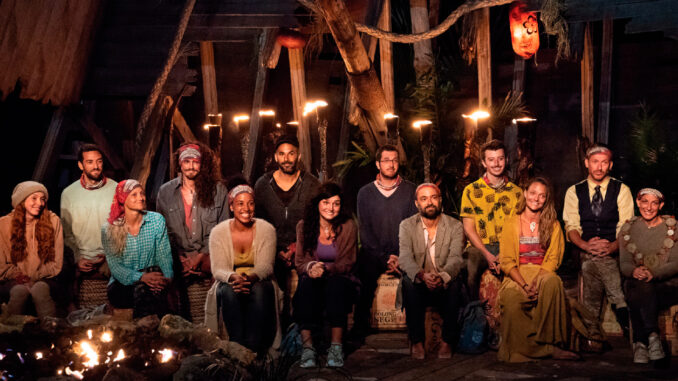
By Mike Bloom
Fourteen hundred and forty minutes. That’s how much raw footage the “Survivor” production team captures of the brutal challenges, bonding, and backstabbing that occur within every three-day cycle that usually makes up an episode of the hit reality franchise. Millions of people have seen countless tales of betrayal and survival play out on their screens. But before the footage gets to the fans, the “Survivor” editing team takes all that coverage and trims it down to forty minutes per episode, spinning the stories that have kept viewers tuned in for two decades and 600 episodes.
In honor of the show’s upcoming 40th season (premiering February 12 on CBS), CineMontage interviewed members of the show’s editing team, as well as executive producers, about the process of editing the biggest reality TV franchise on the planet.

The Raw Materials
Every episode of “Survivor” consists of the same raw materials: highlights of life at the tribe camps; at least one challenge, usually for safety in the form of immunity; and the elimination of a contestant via a vote at Tribal Council. The challenge for editors is how to present the material in the most appealing way.
Jeff Probst (Host and Executive Producer): From start to finish, “Survivor” is a creative collaboration.
Brian Barefoot (Editor, 2000-Present): Everything is divided up on each episode. We have certain editors who cut the challenges. One editor cuts all the Tribals. Then we have four teams of reality editors and producers, and each team cuts one out of every four episodes. Every team has one Supervising Editor, a second editor, and sometimes an additional swing editor who primarily cuts the camp life/reality scenes.
At the start of each episode, we’ll have a story meeting with our producer who was out on location, so they know what happened in detail. They give us an outline of the important beats for that episode.
Then we screen hours and hours of footage. Sometimes that’s the hardest part of the whole process. While screening, we search for important story points and any fun or revealing moments with the contestants.
Bill Bowden (Editor, 2008-Present): We have three challenge editors (Dave Armstrong, James Ciccarello, and Andrew Bolhuis) who rotate every third challenge throughout the season, our Tribal Council editor (Evan Mediuch), a previously-on/next-time-on editor, a super tease editor, a jack-of-all-trades (Jacob Texiara), and two swing editors (Tim Atzinger and Andy Castor), who work on reality scenes every other episode.
Plowden Schumacher (Editor, 2009-Present): Having producers who were on location and in post is hugely beneficial to the process and different than most reality shows which have different producers for production and post. They have already outlined the show and broken it into “pods” that highlight the major events and tell the story. This structure is not set in stone; it’s more of a map with some mandatory goals.
Sean Foley (Editor, 2000-2006; Director of Photography, 2011-2015): The genius of “Survivor” has always been that it is both a social experiment and game of strategy. Tribal Council is the destination of the story arc, so we typically work backward from there. Who got voted off and why? Who else was in jeopardy? Who were the shot-callers pulling the strings? We start by creating a simple outline of the A, B and C stories for each tribe and then watch virtually every bit of footage we can to find enough moments to craft compelling scenes.
The “Winner’s Edit”
A vital part of a typical “Survivor” episode is confessionals. A staple in reality television, it gives players the chance to talk to the camera and the audience directly with their thoughts and feelings about the events in the game.
Probst: For most shows, [confessionals] are simply a recap of an event the player just experienced. Where “Survivor” differs is in the emotional depth of our interviews. Our producers are very experienced and use these interviews to try to uncover the real reason a person is playing this game. Why are they living in a jungle, surviving on little food and enduring the weather? Then it’s the editors who find the structure that takes you inside the player’s head and brings the scene alive. The vast majority of our most moving moments come from the combination of a great interview in the hands of a talented editor.
But not all interviews are created equal. Some contestants have monopolized screen time with their behaviors. Other players received minimal content as a consequence, which has been a cause for viewer outcry over the years. The fan community has even given the effect a name: the “purple” edit, named after notably under-edited contestant “Purple” Kelly Shinn from season 21.
Barefoot: Our main objective is to tell a clear, entertaining story. Some contestants will naturally “pop” more than others, and some are funnier or clearer in their narration than others, so they might be used more frequently. But we always try to do justice to each contestant’s experience. Some viewers will read a lot into “the edit,” and I love that they’re passionate about it. It’s a fun game between us and the audience, but they often read more into it than what is actually there.
Mike Greer (Editor, 2001-Present): The contestants with the most compelling personal stories and who exhibit the most exciting gameplay, are going to be featured more prominently. If a player is just sitting around all day, doing little of interest, they’re going to see less screen time.
On the other side of the spectrum is the person who will ultimately take home the million-dollar prize and the title of Sole Survivor. Diehard fans have taken to studying the edit of each episode in an effort to track who has the best chance of winning. Combing through the footage has allowed them to come up with a “winner’s edit,” which theorizes that the winner of the season will often be shown in a more strategically complex and emotionally positive light compared to their competitors.
Schumacher: “Winner’s Edit” is a fan term. We don’t use it. The people who last longer get more screen time and appear to be “highlighted” but that’s not something we consciously do. They appear “highlighted” because they are the story. They survived.
Matt Van Wagenen (Executive Producer, 2007-Present): We try and give everyone a “winner’s edit.” It’s not uncommon when putting a scene together that we ask, “What would we show if this person won the game?” And that could be for someone who is voted out third.
Bob Mathews (Editor, 2001-Present): Character is revealed through adversity. Typically, the winner wins for a reason. If they’re nice, they appear nice; if they’re not, they don’t appear so.

Origin Stories
Though the core of the game has remained the same, “Survivor” looked and felt very different in its initial iterations. The show was focused more on survival than strategy, and the scenes played more like a documentary than a typical reality show. And just as the show was finding its legs, so was its editing team.
Barefoot: Oh my gosh, I look back at that first season, and the first thing I think is: Why did I use so many dissolves?
We were overwhelmed by the amount of footage. I had never worked with that much footage before. It was hard to wrap your head around it and come up with a game plan to make sense out of it. And the funny thing is, that first season had a lot less footage overall than any season after. At the time, we were just trying to keep up with the deadlines. And we were cutting that season as the episodes were airing and becoming a phenomenon, so that made it quite surreal and fun and exhilarating. We’d literally be working on an episode up until the week before it aired.
Foley: Season 1 was a challenge because there was no blueprint. There were no other shows like “Survivor” and reality TV was in its infancy.
In terms of style and tone, we started with a blank canvas. Since every episode had a dramatic reveal at the end, we began to emulate traditional drama, crafting scene work from scraps of moments to create a sense of cause and effect that viewers could track. Today, the techniques we experimented with back then have become commonplace in good non-fiction. But at the time, we were struggling to figure it all out.
The iconic characters of season one became the benchmark of the series. Originally cast from key demographics across the country, each character was chosen to appeal to a given group of viewers. Ideally, there would be someone for everyone to root for.
Mark Burnett knew that developing these characters was going to be the key to the show’s success and we worked hard to do that. In the end, it was really just a handful of key moments that defined these characters: Richard’s naked birthday, Rudy’s stubborn refusal to “get along” with younger teammates that mystified him, or Gretchen’s nurturing leadership that ultimately led to her surprising demise.
Mathews: I remember in Season 2, the first episode’s Tribal Council was a blowout vote. We were worried that there wouldn’t be enough suspense because the vote was so straightforward. In an effort to create suspense, I introduced the classic “Survivor” over the shoulder shot, showing the contestants holding up the vote without revealing who they were voting for. It was the start of something we would continue to do for seasons to come.
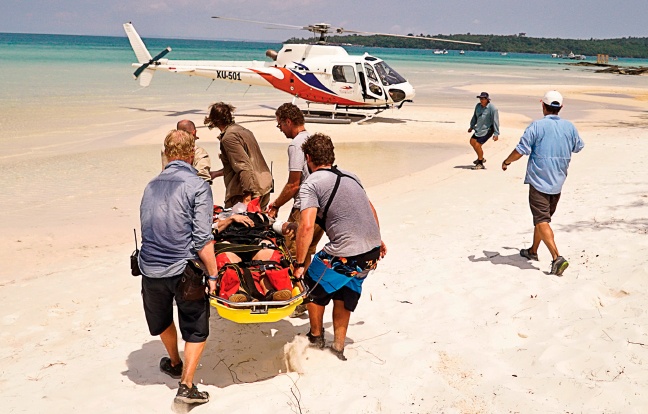
The Fourth Wall
Throughout the show’s run, there have been moments where the reality sets in of the environment and the people playing. It’s in those moments when the fourth wall shatters, as the show eschews its usually-invisible crew to showcase the intensity playing out in front of them.
Foley: Reaching outside the game into the real world is always dicey because it risks breaking the sense of isolation that is so key to “Survivor.” We actually worried these moments might undermine the show. Instead, they became powerful emotional stories that deepened the characters and created some of the show’s most memorable moments. On a personal level, these stories can be tough to edit. But as a storyteller, they are great opportunities to capture something universal about the human condition: Moments of joy and sorrow we can all relate to on some level.
Van Wagenen: Sometimes it’s a matter of necessity. Editors always keep the fourth wall in mind. But there are moments when we don’t have time to worry about the crew in shots and booms in frame. Those moments can quickly turn from cinematic to vérité. And really, I think it puts the audience right in the middle of these intense moments.
One of those intense moments came in the second season with the first-ever medical evacuation. Contestant Michael Skupin had collapsed on the fire due to smoke inhalation, severely burning his hands in the process. What followed was a harrowing sequence that saw castaways and crew alike stepping in to treat him.
Foley: The imaginary world of “Survivor” was shattered when Michael had to be medevaced after falling into the fire. In the edit suite, editor Ivan Ladizinsky faced a difficult challenge because the injury itself happened early in the morning when there was no camera on Michael. His screams of pain brought crews running as he stumbled into the river in agony. To tell the story visually, Ivan used a very Hitchcock technique using just sound and nature B-roll to tell the tale off-camera before plunging into the chaotic live coverage of events.
Thirty seasons later saw another scary medical situation. In the blistering heat of Cambodia, three contestants collapsed due to exhaustion in the middle of a challenge. The scene was a frantic fracas, as crew members of all backgrounds ran out on the course to assist the fallen castaways.
Armstrong: That was a tough few weeks of work. I’ve edited news pieces before with really disturbing imagery; it doesn’t leave you when you turn off your machine. This felt the same to me, despite knowing the outcome that [the contestants] were okay. The tricky part of this sort of thing is showing the viewer what is happening without editing it in a sensationalized way. So, I let many of the shots play out in a raw documentary style, even if it meant revealing our crew, medical staff and our entire 300-crew set up.
Musically, I stayed with subtle cues and drones and brought in simple melodies or percussion when I thought something needed to be highlighted or a change in tone was necessary. The staggered medical machines and crew chatter needed to dominate the sound scape. Editing, in general, is something that should rarely be noticed. But with this sort of thing, it’s vital to stay simple and keep out of the way.
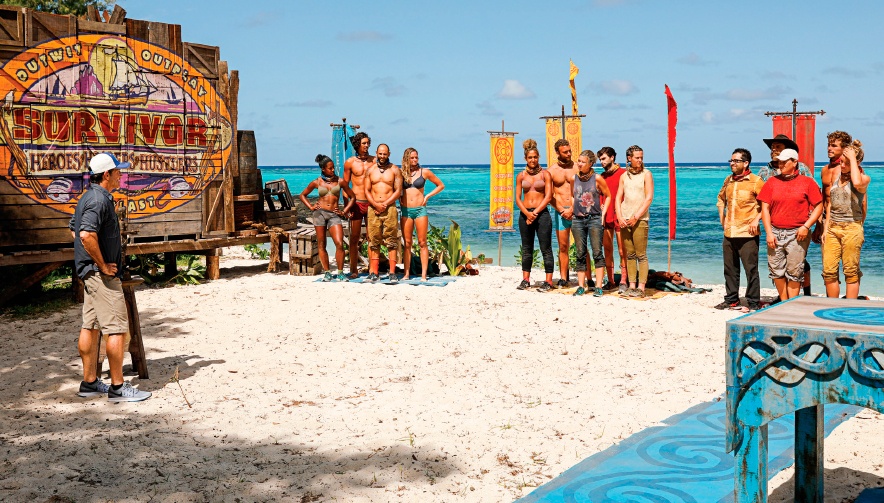
The Evolution of the Edit
As has been shown, “Survivor” has run the gamut when it comes to storytelling, whether it be comedic, dramatic, or heart-pounding. And as the show nears two decades on the air, it’s crystal clear how it’s transformed, and will continue to transform as new moments play out onscreen.
Bowden: “Survivor” has always evolved; I think that’s one of the main reasons our viewers keep coming back after 39 seasons. We have to keep the players on their toes and our fans intrigued.
Greer: The first two seasons of “Survivor” certainly look different from what the show is today. But by season 3, I think we’d begun to find our “look.” I’m usually going for more of a cinematic style than a cinema verité look. That’s what makes “Survivor” different. It’s not always about cameras rushing around. We take the time to feature the exotic locales and the contestants dealing with the elements.
Van Wagenen: A big difference in storytelling over the years is the speed of the show. That’s probably the most obvious change.
Bowden: The more complex the strategy and game gets, the more interesting it gets. So we strive to show as much of the complexities as possible. That quickened pace also allows us to slow down for powerful moments with the players that are not strategy as well. These moments give our audience a chance to really get to know the players.
Barefoot: One of the great things about being an editor on “Survivor” is that we’ve always been free to try new things and mix it up. We have a distinct editing style on the show, but we’re also free to break those rules whenever it feels right. Lately, we’ve been doing more flashbacks and out-of-chronological order storytelling. Anything to keep it feeling fresh.
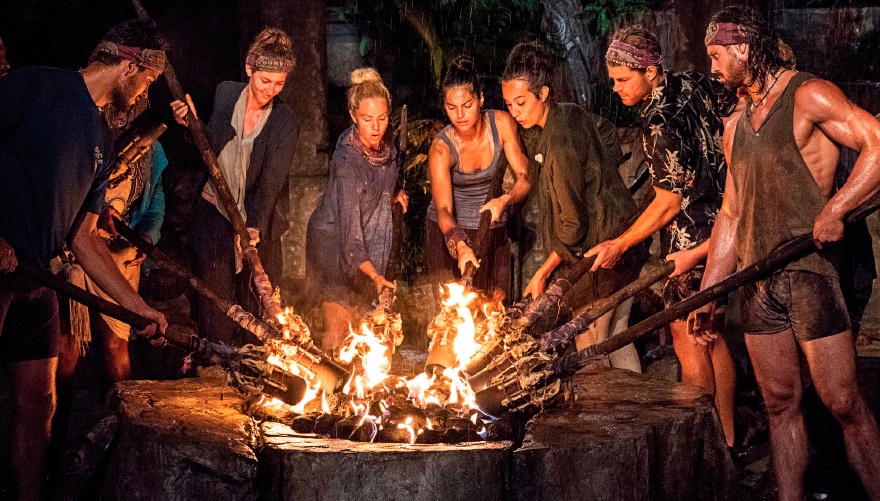
Van Wagenen: Technology has ushered in more changes. When we switched to HD in 2007 we developed a more cinematic style. Recently, drones and GoPros have given editors more options to tell stories in unique and new ways.
Schumacher: Part of the secret sauce that has made “Survivor” so successful for 40 seasons is that everyone, in every department, is always trying to make the show better. It helps that all the other departments are always upping their game, embracing new technologies, utilizing better cameras, better sound, finding better contestants, and coming up with innovative themes.
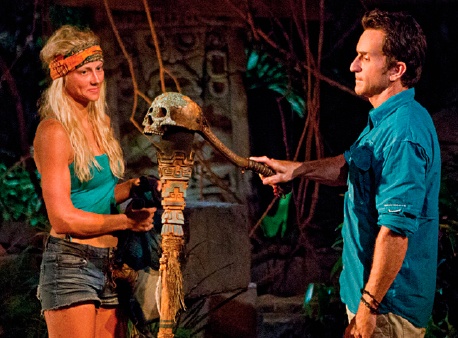
Armstrong: American attention spans have never been shorter. Our viewing choices now consist of YouTube or Instagram clips lasting all of one minute. Inevitably “Survivor” will feel some of the effects of that: Challenges have been ranked up, season opens are cut shorter, and the season recap blazes through. On seasons with larger twist elements, we must get extra creative to make room for them while maintaining the lynchpins of “Survivor” that audiences know and love.
Van Wagenen: What I love about our editors is that they love to be challenged. Each season we ask ourselves how can we tell a story differently and how can we tell it better. But the truth is, at its core, “Survivor” still is and will always be about the human experience.
Mike Bloom is a freelance writer and diehard “Survivor” fan.





